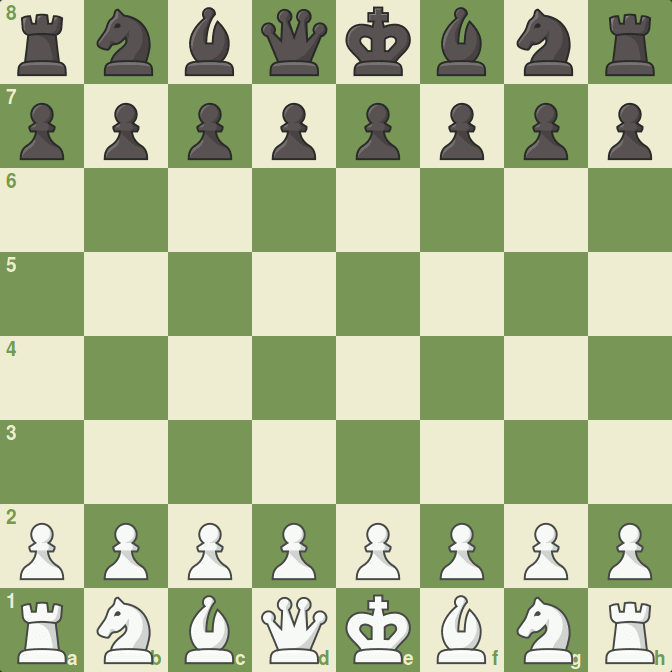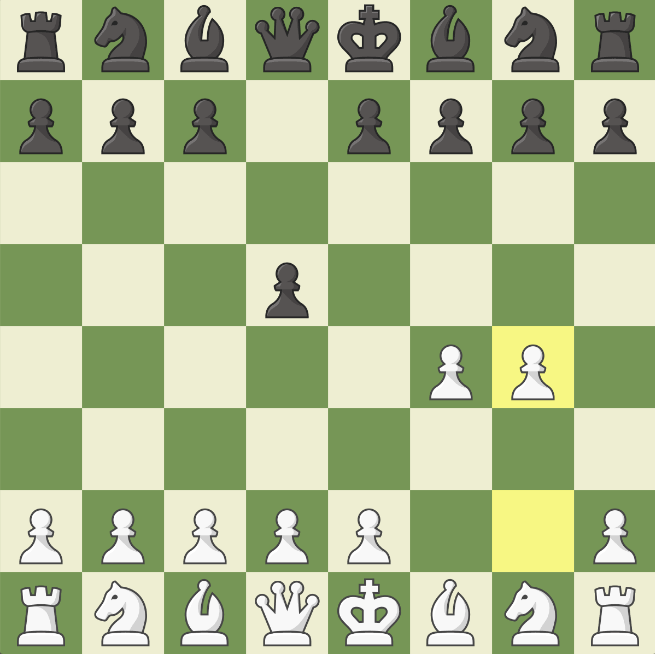
Fool's Mate
The game has just started, and both players are ready to engage in an epic battle. Two moves later, though, and the war is over. Believe it or not, this is a possibility in chess.
- What Is Fool's Mate?
- Why Is It Such A Foolish Mate?
- Examples Of Similar Ideas Played By Professional Players
- Test Your Skills
- Conclusion
What Is Fool's Mate?
Fool's Mate is the fastest checkmating pattern that can occur in chess and can happen after just two moves. It is possible to achieve it only if White makes terrible opening mistakes, and that is why people call it Fool's Mate. Only Black can deliver this mate in two moves, although White can also win the game in three moves in a similar fashion.
This checkmate happens with the following sequence of moves:

Notice that White's mistakes open a diagonal to their king, which cannot be defended by any of their pieces. Since White's forces restrict their monarch, the game ends in checkmate.
In this game, played by amateurs Walter Thomas Mayfield and William Robert Trinks in the 1959 U.S. Open in Omaha, Nebraska, White applies a similar pattern to mate Black.
Why Is It Such A Foolish Mate?
At the beginning of each chess game, the two weakest squares are always f2 and f7, since the white and black kings are the only pieces protecting those squares. For thIs reason, the quickest checkmates in chess almost always concentrate on these squares.
Furthermore, after Black moves their e-pawn, the d8-h4 diagonal is free to be used by the black queen. For Fool’s Mate to happen, White must be oblivious to both of these facts and play two poor moves right from the start.
Besides, moving the f- and g-pawns does not help White to control the center, and these moves also weaken the already fragile kingside. Notice how White would still be in a bad position even if Black could not attack the white king.

Examples Of Similar Ideas Played By Professional Players
Although this mating pattern is possible, its occurrence is rare in real games, even among beginners. As you saw, one player would need to play two awful moves right at the start of the game and keep their king trapped for this mate to be possible.
Still, this does not mean that learning this pattern is useless. This mate illustrates a significant vulnerability in chess, which is the f-pawn and its diagonals. Take a look at this example from a game played in 1896 in New York by Frank Melville Teed and Eugene Delmar.
In another game, Austrian chess master Josef Emil Krejcik, playing blindfolded against an unknown player, used this same concept to win the game in six moves.
Test Your Skills
Now that you are familiar with Fool's Mate and the vulnerability that it explores, it is time for you to test your knowledge. Solve the puzzles below to practice your attacking skills!
Puzzle 1: The classic Fool's Mate.
Puzzle 2: Exploring the same weakness.
Conclusion
Fool's Mate is one of the most well-known mating patterns in the world of chess. Preventing this mate can save you from a lot of frustration, and learning how to explore your enemy's weak f-pawn can give you an edge—maybe even allow you to win quickly.







